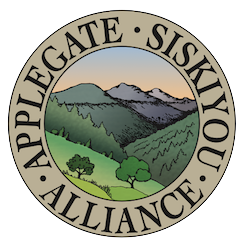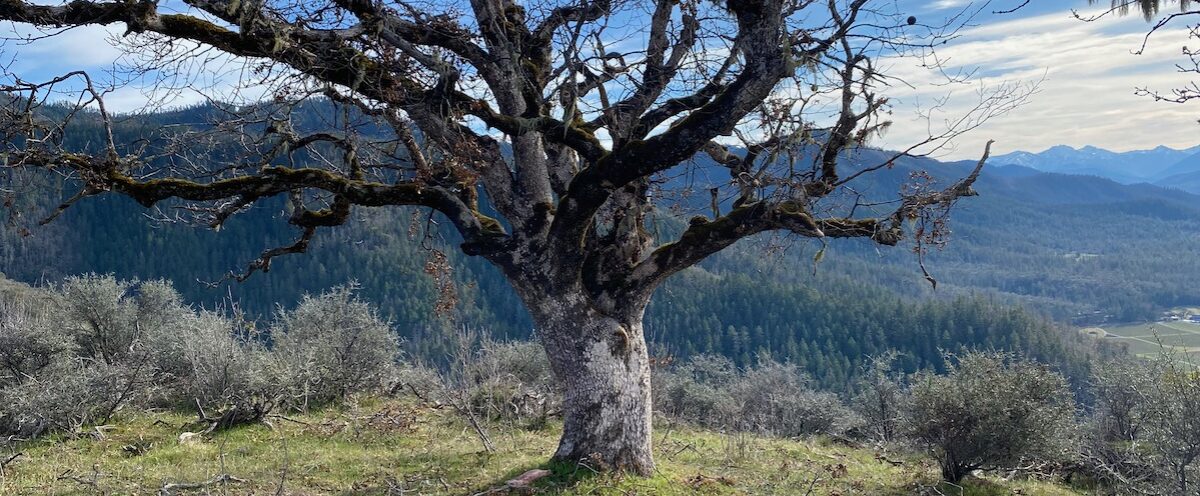
Click here to sign our petition to Stop Bear Grub!
The Deming Ridge Units of the Bear Grub Timber Sale
The Medford District BLM has proposed the Bear Grub Timber Sale in the mountains between Ruch in the Applegate Valley and Talent in the Rogue Valley. The Bear Grub Timber Sale includes units along “Deming Ridge,” a beautiful ridgeline extending west from the face of Anderson Butte into Sterling Creek and the Little Applegate River Watershed.
The north-facing slope of Deming Ridge drains into Grub Gulch, a small tributary of Sterling Creek, and is dominated by forests that have been heavily logged in previous BLM timber sales. These forests include tree plantations created by clearcut logging, heavily thinned forests and high graded conifer stands, as well as small patches of mature, closed canopy forest. Because the area has been degraded by industrial logging in some locations, it is incredibly important to protect the remaining intact, mature forests, as they are vital for wildlife habitat, fire resilience and climate stability.

The south-facing slopes of Deming Ridge, above Deming Gulch, are varied, beautiful and support a more natural mosaic of vegetation. Dominated by broad swaths of arid grassland and lined in dense chaparral, oak woodland, open-grown ponderosa pine and dry mixed conifer forests, these south-facing slopes are open, sunbaked and largely too arid to support closed canopy forest habitats. Patches of dry mixed conifer forests are mostly limited to growing in narrow “stringers” or corridors of habitat running vertically down the face of the ridgeline. These corridors of forest are often precariously perched on harsh, exposed slopes and are surrounded by non-forest plant communities.
They also provide important wildlife habitat, including nesting habitat for species such as the great gray owl, denning habitat for the Pacific fisher, and thermal cover for large herds of overwintering black-tailed deer. These stringers of forest are also extremely important for habitat connectivity by providing corridors of mature forest habitat, connecting local watersheds and providing dispersal corridors across the region.
The Impact of BLM’s 2014 Sterling Sweeper Timber Sale
Portions of Deming Ridge were previously logged using “group selection” prescriptions in the BLM’s 2014 Sterling Sweeper Timber Sale. This recent timber sale demonstrates the impact of group selection logging and the problems it tends to create.
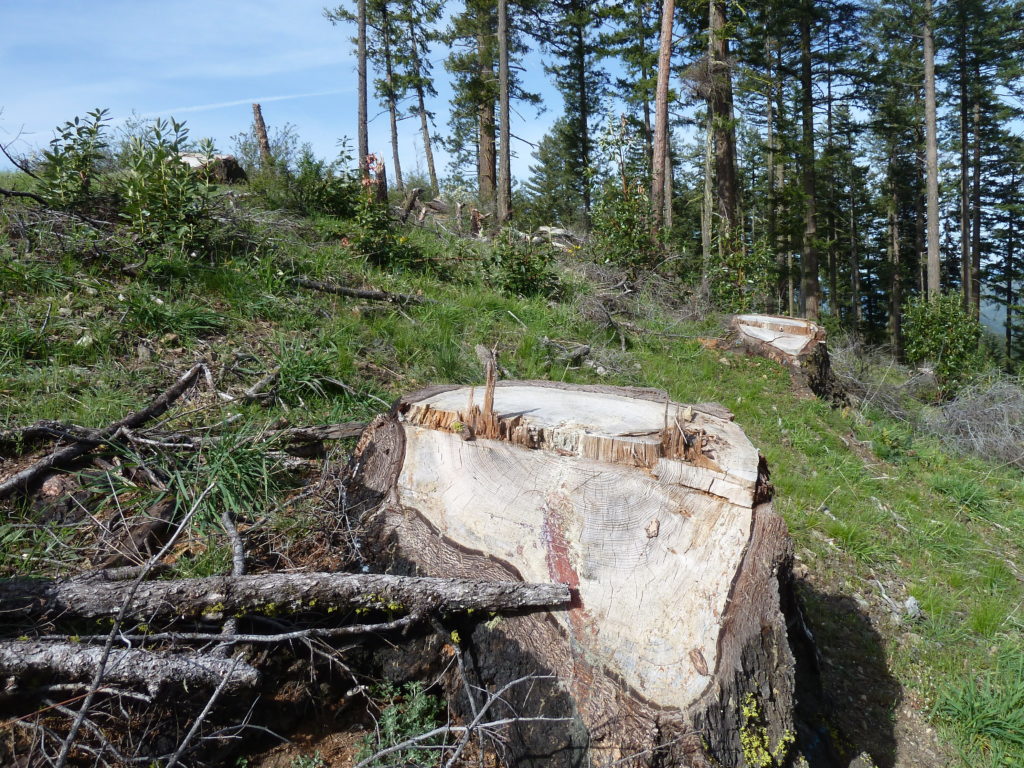
Six years after implementation, the Sterling Sweeper Timber Sale cleared stands of large, fire resistant trees, creating habitats that are drier, more windswept, more flammable and choked with dense understory growth. Having filled in with young, dense understory vegetation, fire risks have significantly increased within the footprint of previous group selection cuts, creating additional fuel hazards and encouraging more severe fires in the future.

Further out the ridgeline, beyond the group selection cuts from the 2014 Sterling Sweeper Timber Sale, the BLM has now proposed two new timber sale units on Deming Ridge. These include a north-facing Douglas fir stand and a large, southwest-facing conifer stringer proposed for logging in the Bear Grub Timber Sale.
North Slope Deming Ridge
Bear Grub unit 3-1 reaches to the summit of the ridge, mingling with the south-facing grasslands overlooking the Little Applegate Valley, and extends down the northern slope of Deming Ridge toward Grub Gulch. These north slopes naturally support closed canopy forests of Douglas fir, but have been heavily logged in previous timber sales.
Although much of Deming Ridge’s north-facing slope consists of young, plantation stands, Bear Grub unit 3-1 contains mature conifer forest. The upper portion of the stand is dominated by large, fire resistant trees and supports relatively intact canopy conditions. The filtered canopy is suppressing understory growth, maintaining a light grassy understory and naturally moderating fuel loads.

Lower on the slope the forest is more productive, but has been more heavily logged and canopy conditions are more heavily compromised. Previous logging treatments included both commercial thinning and small group selection clearcuts interspersed throughout the stand. Dense patches of regenerating Douglas fir trees have grown up in the group selection openings, dramatically increasing fire risks in affected stands.

Young flammable growth in a previous group selection cut in Bear Grub unit 3-1. 
Dense growth from previous logging, with overstory trees marked for removal in Bear Grub unit 3-1.
Despite the disastrous results of previous group selection logging in the area, the BLM is now proposing to log the last relatively natural forests on the northern slopes of Deming Ridge, using an even more aggressive approach to group selection logging. The BLM has “marked” the trees in Bear Grub unit 3-1 with white paint, clearly showing which trees they intend to log. The timber sale mark in unit 3-1 demonstrates that whole groves of dominant overstory trees would be logged if the Bear Grub Timber Sale is approved.
South Slope Deming Ridge
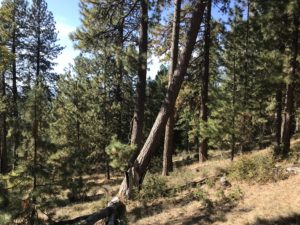
The BLM has also identified the largest forested corridor extending down the southern face of Deming Ridge as a group selection logging unit. Completely surrounded by dry grasslands and parched oak woodlands, the forest exists in a sensitive niche habitat that could easily be impacted by commercial logging.
Just below the summit of Deming Ridge a small, flat terrace created by an ancient landslide supports an open forest of large, old ponderosa pine. Due to the relatively open conditions, the surrounding grasslands spill into the woodland, creating a rich understory of grasses and herbs. Tree distribution is patchy, diverse and open enough to support the regeneration of healthy, young ponderosa pine saplings.
As the slope steepens below the piney terrace, mature groves of Douglas fir begin to dominate. Although widely spaced, the large overstory trees create a relatively closed canopy and cast shade throughout the stand. The stand supports an open, grassy understory and minimal fuel loading beneath groves of large, open-grown, overstory trees. Although not old-growth or even late successional forest, if left alone this stand will mature into an important late successional habitat with exceptional fire resistance. We must protect forests like this now, so that fire resistant old-growth forests are more abundant in the future!
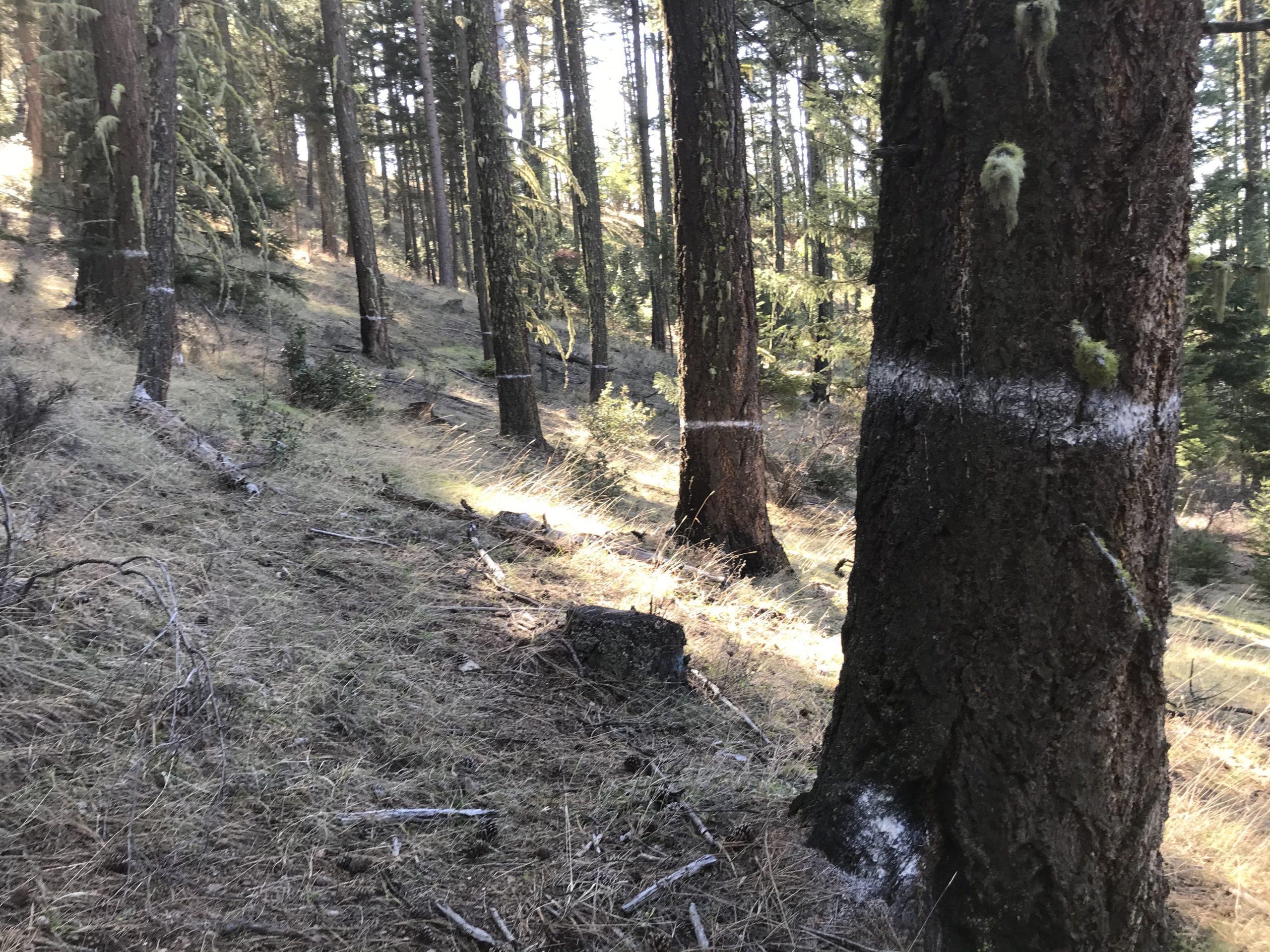
The BLM has marked whole groves of mature forest for removal on the southern face of Deming Ridge, using a group selection prescription throughout this isolated conifer habitat.
The impact of Group Selection Logging on Deming Ridge
Although both north- and south-facing slopes will respond differently to the canopy removal and soil disturbance proposed in the Bear Grub Timber Sale, the development of dense, woody understory growth will be universal. Judging from the response of past BLM logging treatments in the Applegate Watershed, the south-facing slopes will compensate for canopy loss and large tree removal by regenerating dense stands of manzanita, deerbrush, buckbrush, madrone and young conifer trees. North-facing slopes will respond with an abundance of young madrone and Douglas fir.
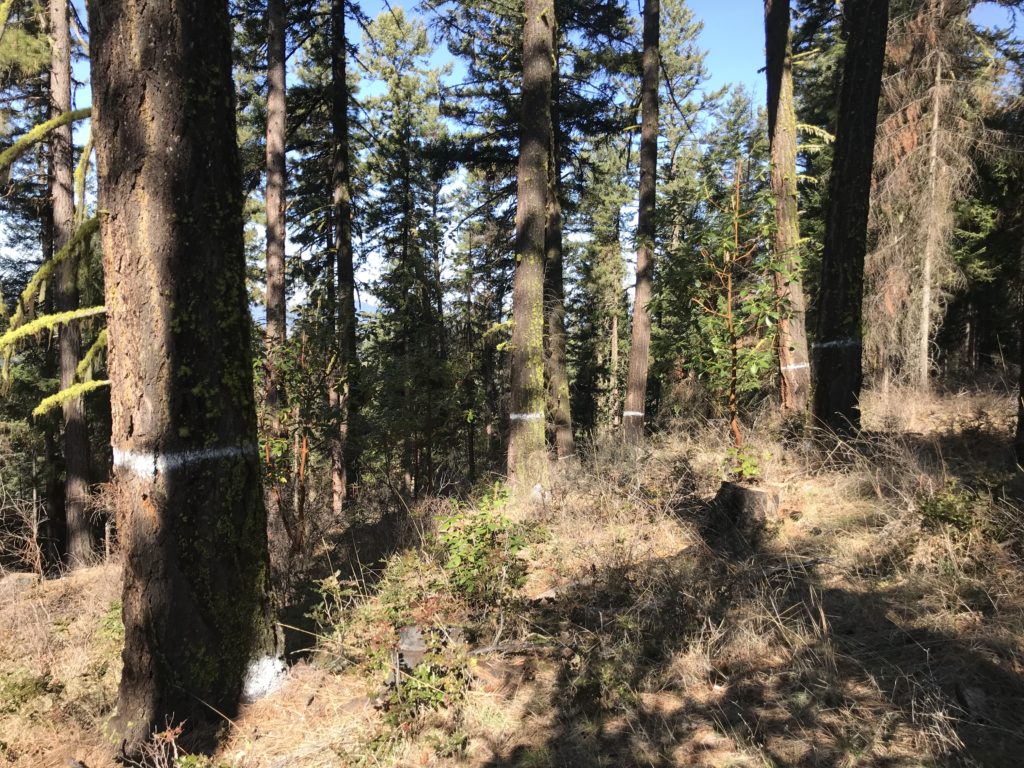
In both cases, large, fire resistant trees will be removed and dense, young growth will proportionally increase throughout the stand. Ambient air temperature, exposure to drying winds and direct solar radiation will also increase drought stress and dry forest fuels, leading to more intense wildfires, longer fire seasons, and increased levels of overstory mortality. Trees around the edges of newly created group selection clearcuts will be more susceptible to wildfire effects, windthrow, drought, and other forms of mortality and stress.
By removing whole groves of large, dominant trees, the Bear Grub Timber Sale will also lead to a significant loss of stored carbon and a long-term loss of carbon storage capacity. The mature forests proposed for logging currently buffer against the effects of climate change, provide refugia for wildlife, and behave as carbon sinks necessary for climate stabilization. The BLM is proposing to replace these beautiful forests and carbon sinks with stump fields that contribute to greenhouse gas emissions, degrade natural forest habitats, and provide little wildlife habitat value.
Deforestation and forest degradation is not only occurring in tropical rain forests throughout the Amazon, Indonesia and in Africa’s Congo River Basin, it is also occurring before our very eyes throughout western North America on both public and private land, including right here in the Siskiyou Mountains. While the BLM works to increase timber production, climate sinks will be transformed into sources of carbon pollution and future climate resilience is being compromised. Unfortunately, the BLM is managing these lands to produce short-term profits for the timber industry, not for the long-term health of forests and communities or for the ecosystem services they provide.

Despite claims by the BLM that the Bear Grub Timber Sale is forest restoration or fuel reduction, the tree removal mark demonstrates otherwise. Instead, the Bear Grub Timber Sale is a Trump-era timber grab, a return to clearcut logging on federal land, and a major step in the wrong direction. These are public lands. The health of our forests, the health of our climate and safety of our communities should not be sacrificed for short-term timber industry profits. Please join us in protecting our communities and defending our public forests. Stop Bear Grub!
